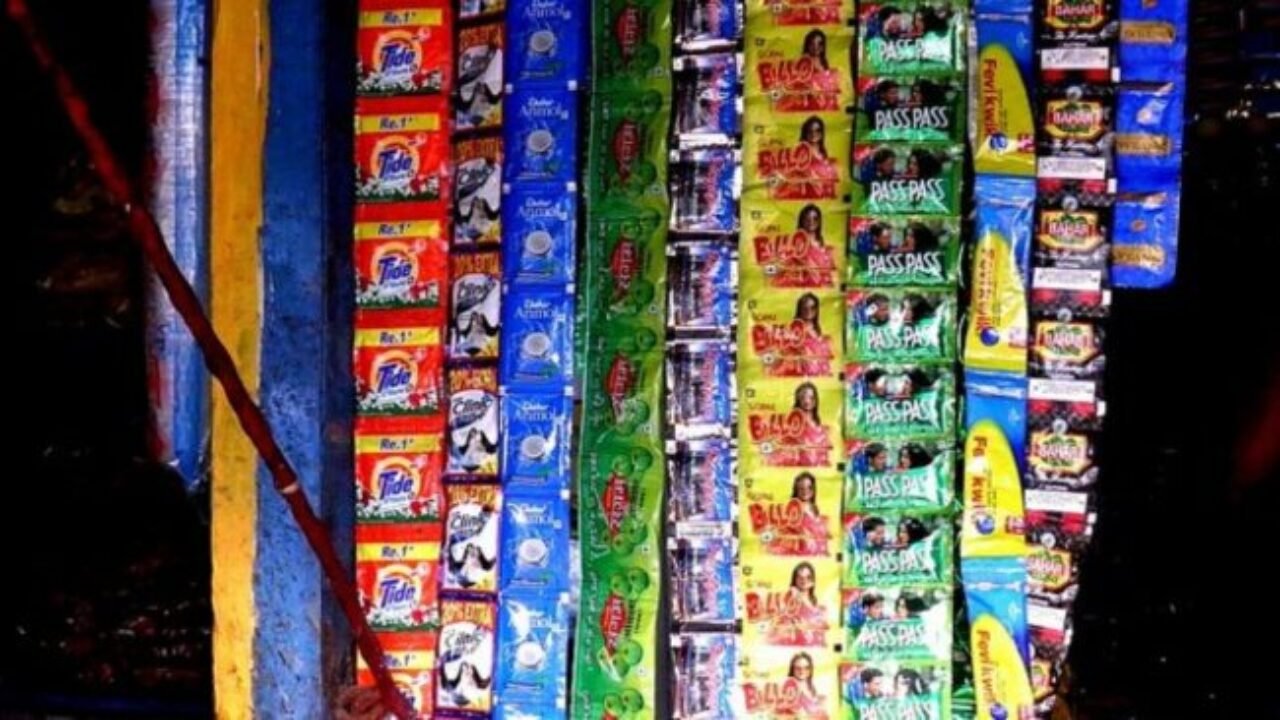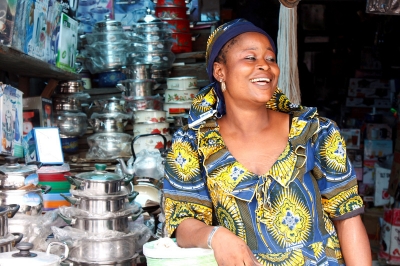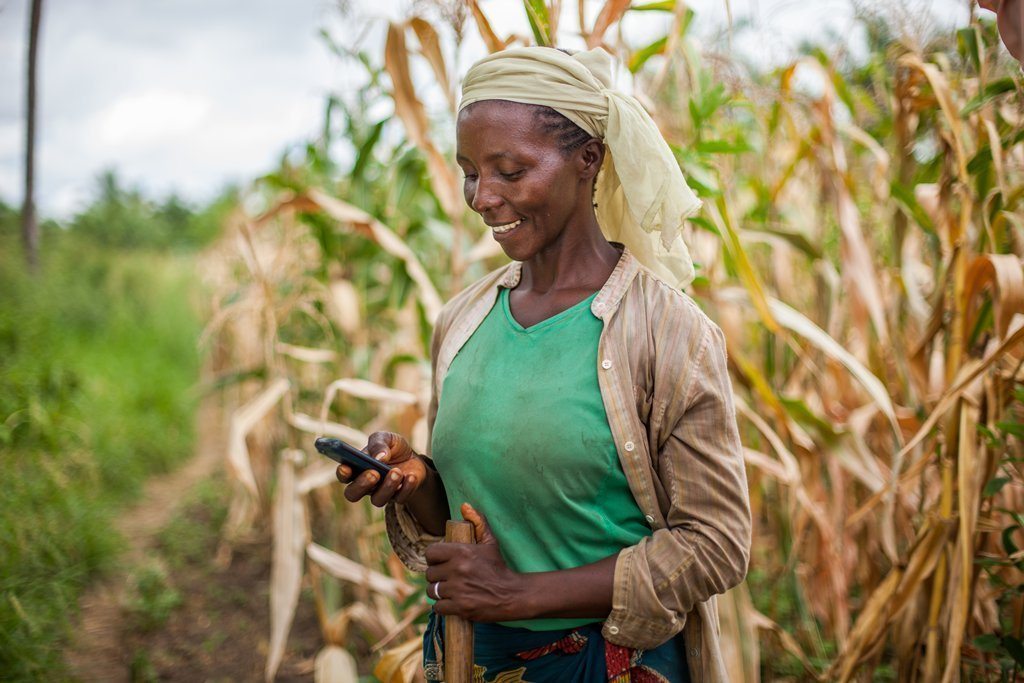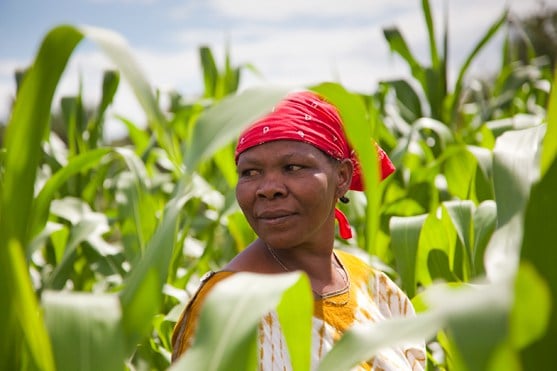Down the alley, off the ever-busy Oyingbo market in Lagos Island across from a building abandoned mid-construction, Mama Ngozi does her business. It has been a decade since she opened her foodstuff shop. On an average day, dozens of customers visit her shop to patronise her.
The business-savvy mother of four is now looking to expand the range of items in her shop, sadly, access to loan facility is the constraint.
“There’s a bigger shop for rent around the corner, but to move and expand I need a loan from the bank. They offered me a 25 percent interest rate, which is too high. The shop is busy, but my margins are tight,” she lamented. “But I’m speaking to family members to see if someone will be willing to lend me the money instead,” she added.
Mama Ngozi’s situation is not different from several small-scale businesswomen in Nigeria who do not have access to banking products to expand their businesses.
Advertisement
A recent report by PwC revealed that women in Nigeria account for 41 per cent ownership of micro businesses in the country — with 23 million female entrepreneurs operating within this segment — placing Nigeria among the highest entrepreneurship rates globally.
Banking in Nigeria remains an attractive sector, with over $9 billion in value pools, but despite high levels of competition in the space, the majority of consumers are underserved.
Lack of access to services, especially in rural areas, issues of affordability, and poor user experience have all contributed to the frustration consumers experience right across financial institutions.
Advertisement
Take the case of Alhaja Adiatu, a 45-year-old widow who resides in Ajebamidele village in the ancient city of Ile-Ife, south-west Nigeria. She alongside her two children work on the two acres of farmland left behind by her late husband. She sells any extra produce in the local market and occasionally sells firewood. With no bank nearby, cash is king in Ajebamidele village.
“I know I can get more from my land if I could get hold of chemicals, better equipment, and good quality seeds like some of the other farmers nearby,” she said.
Studies have shown a positive correlation between financial inclusion and economic wealth, especially for women. Access to financial services allows for improved capital flows for business expansion, which creates more jobs.
Adiatu said “My brother told me I can get money from the bank to buy things for my farm, but there are no banks nearby and I don’t have an account, so I don’t know how. He lets me use his account when I need to make payments, but he is always complaining about the high charges. They even charge you to take out your own money, so I’m not sure if it’s worth getting my own account or asking them for money.”
Advertisement
Sachetisation: Targeting customers at the pyramid base

In most emerging and developing markets such as Nigeria and India, the act of making affordable, bite-sized packets out of premium products came to be known as “sachetisation”.
The development of banking products tailor-made for women and specifically targeted at the base of the pyramid as seen in India could be the real drivers for financial inclusion.
Advertisement
According to 2019 report by Enhancing Financial Innovation and Access (EFInA), an estimated 36.6 million out of 99.6 million adult population remain unbanked in Nigeria.
Sachetisation as seen in the fast-moving consumer goods (FMCGs) industry has the potential to truly transform the way women consume financial services in the country and boost adoption significantly.
Advertisement
Interestingly, lenders in India have taken a cue from the sachet revolution in FMCGs and are currently doubling down on making sachetisation a reality in the financial ecosystem.
In these emerging markets, sachetisation is now the norm from biscuits to detergents, cooking oil, liquor, as cash-strapped consumers – who occupy the lower base of the pyramid, want the same utility as everyone else, but they could only afford it one sachet at a time.
Advertisement

The India approach
Advertisement
India’s central bank, the Reserve Bank of India, has taken two important measures to make sachetisation in finance happen.
First, by initiating steps towards the creation of a public credit registry (PCR), a public digital registry to capture and store financial information of borrowers in India, both existing and new borrowers.
The credit registry will collate the borrowing history of both individuals and corporate borrowers.
The primary reason for building a PCR is to remove information asymmetry, providing lenders with a 360-degree view of the borrower’s liabilities. The secondary reason is to provide bankers with up-to-date information on the quality of their credit portfolios.
The second measure is the creation of the account aggregator which is a new financial institution that manages how other financial institutions access your data, based on your consent.
It enables users to demand their data from their financial services providers in real-time, in a machine-readable format.
The account aggregators can gather data from all financial institutions — including banks, non-banking financial companies, mobile money wallets, mutual funds, tax receipts, and others who are willing to offer their data over apps.
Regulations ensure that the business model of these account aggregators does not encourage the reckless collection of data. They have a fiduciary responsibility to you and are not data brokers for the bank. They simply manage the flow of encrypted data and do not read it.
Together, the PCR and the account aggregator will allow financial intermediaries to see in near real-time the complex patterns of financial cash flows of individuals and businesses.
This will enable banks to be able to lend judiciously to India’s large underserved population. By employing the power of big-data analytics and machine learning, banks will be able to create individualised financial products for each user.

In Nigeria it is still much talk and less result
Despite the government-backed financial inclusion drive which has resulted in an increase in the number of banked populations, access to financial product continue to remain tepid in Nigeria.
Insurance penetration continues to be well below the global average and huge lending gap — credit demand and availability for MSMEs.
The Central Bank of Nigeria (CBN) through its 2012 National Financial Inclusion Strategy (NFIS) projected that 80 percent of Nigerians would have access to financial services by December 2020. Sadly, this has remained a mirage.
The apex bank seems to have shifted the target again to 95 percent financial inclusion by 2024.
This emphasises the need for even more innovative solutions to transform the underbanked population into truly engaged financial stakeholders in Nigeria, Africa’s largest economy.
And just like sachetisation, financial inclusion helps to improve the standard of living for citizens such as Mama Ngozi and Alhaja Adiatu, who are often neglected by deposit money banks.
Views expressed by contributors are strictly personal and not of TheCable.
Add a comment







